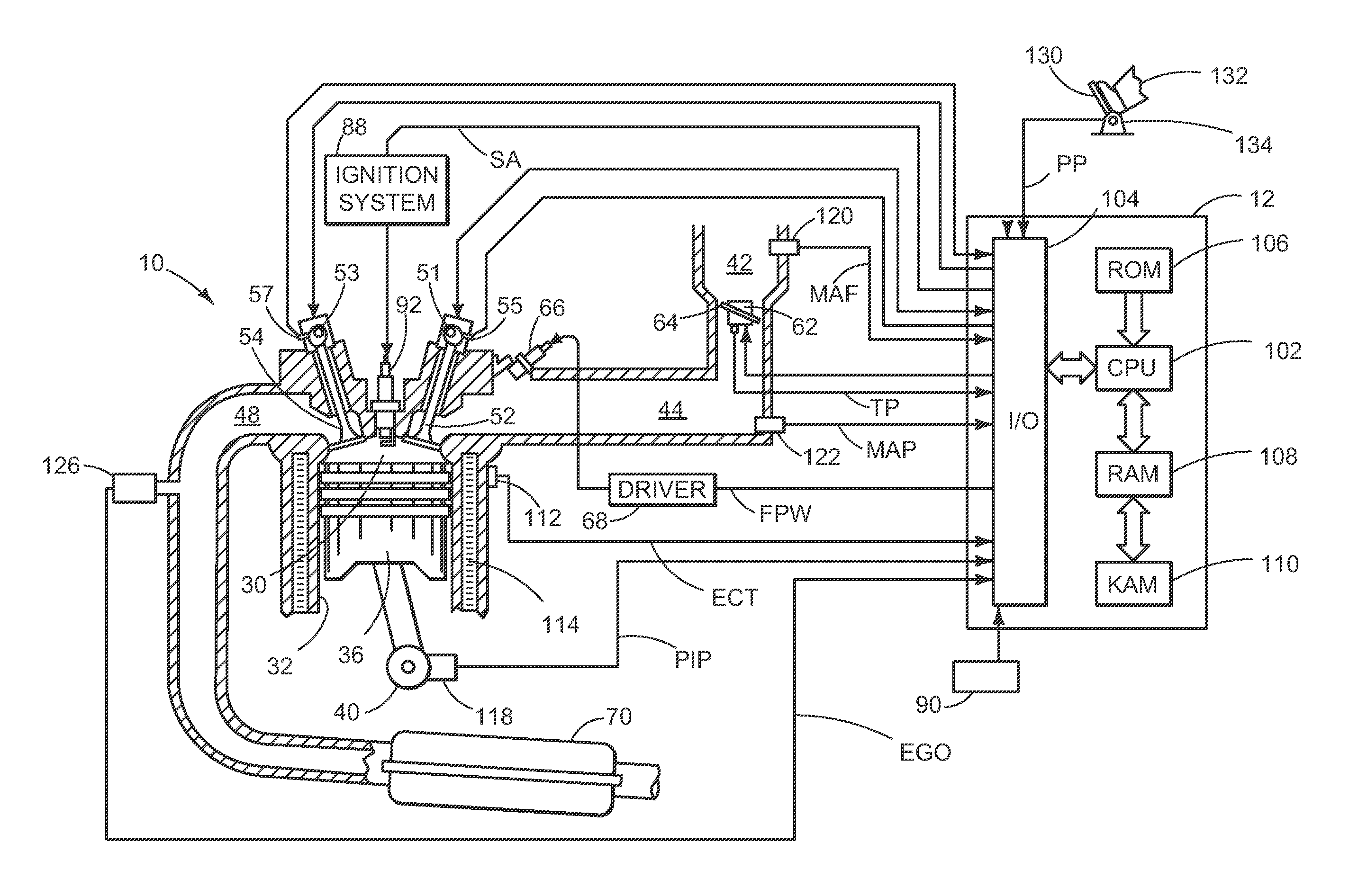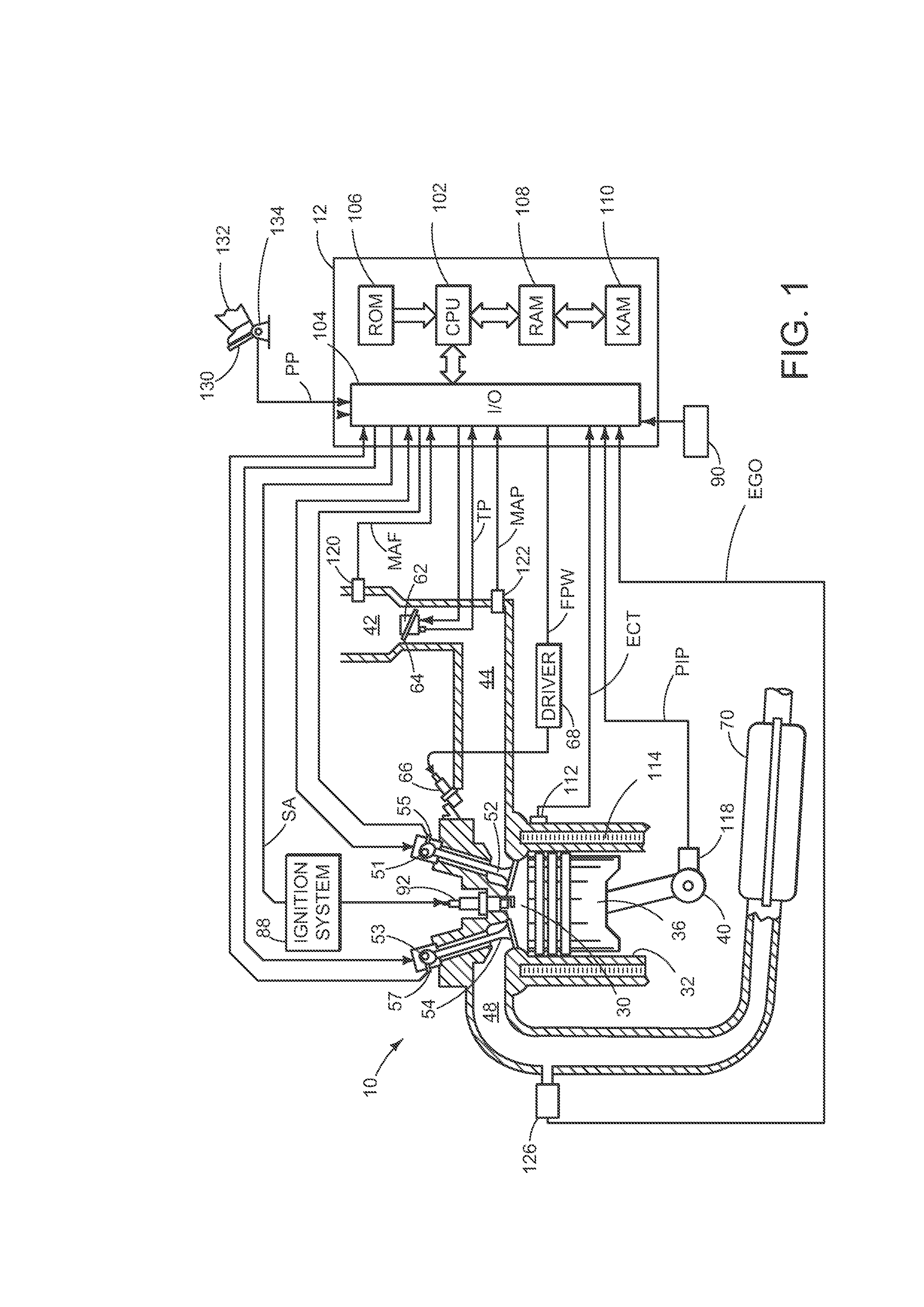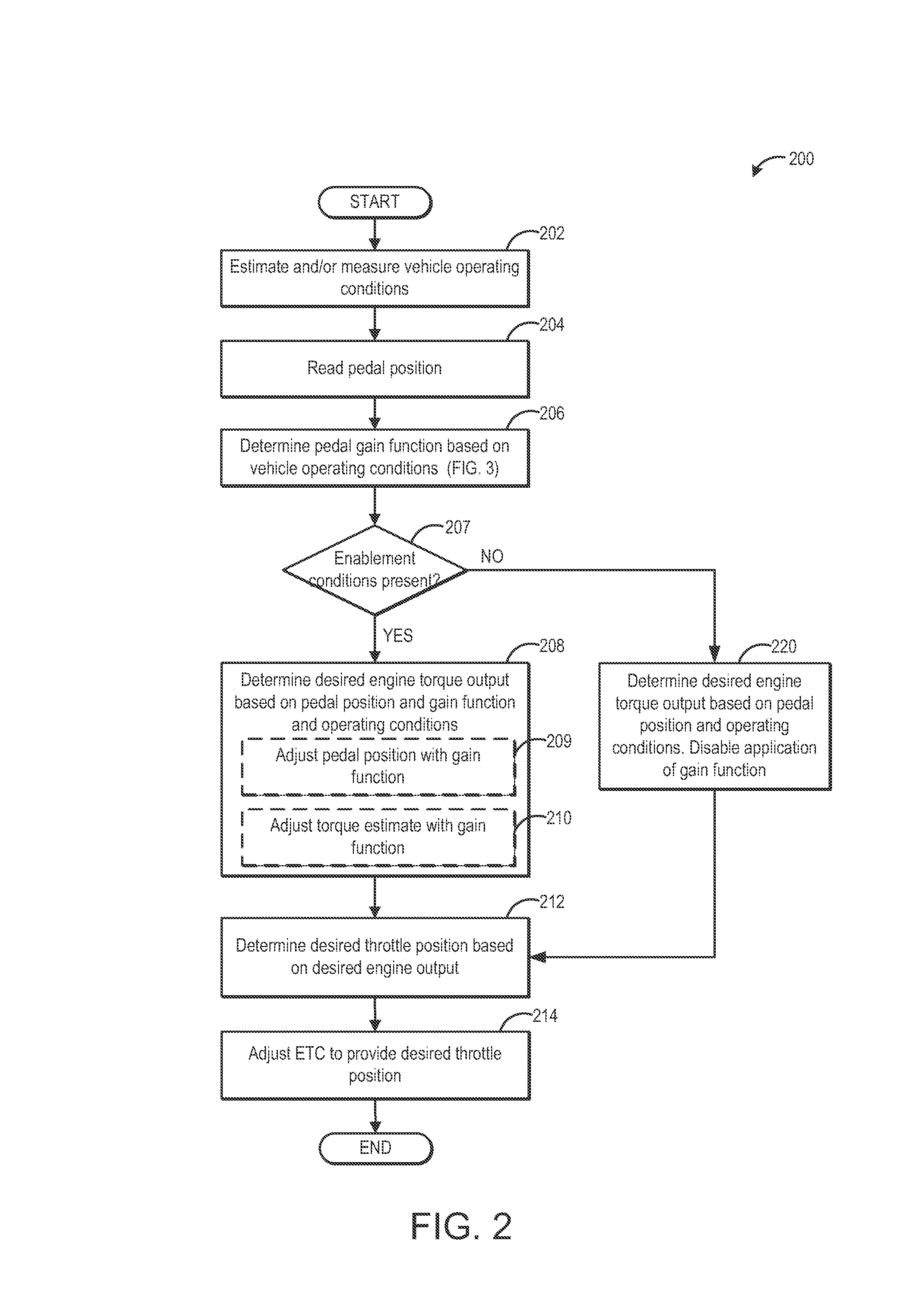Engine response adjustment
a technology of engine response and adjustment, applied in the direction of machines/engines, electric control, instruments, etc., can solve the problems of increasing the amount of pedal depression applied, and reducing the ability to maintain a level of vehicle performance. , the effect of reducing the amount of driver effor
- Summary
- Abstract
- Description
- Claims
- Application Information
AI Technical Summary
Benefits of technology
Problems solved by technology
Method used
Image
Examples
Embodiment Construction
[0016]The present application describes methods and systems for adjusting the relationship between an accelerator pedal signal and engine output torque in the engine system of FIG. 1. An engine controller may map an accelerator pedal signal to an engine output torque and further adjust the mapping with an adaptation term that is based on selected vehicle operating conditions. The controller may be configured to perform a control routine, such as the example routines of FIGS. 2-3, to determine a gain function based on vehicle operating conditions, such as vehicle road grade, the presence of headwinds or tailwinds, as well as a load being carried or towed by the vehicle. Example gain function adjustments are described herein with reference to the graphs of FIGS. 4A-B and 5A-B. In some embodiments, the controller may apply a grade compensation algorithm (FIG. 7) so that as the road elevation varies, the pedal position of the operator may be maintained as close to a nominal pedal positi...
PUM
 Login to View More
Login to View More Abstract
Description
Claims
Application Information
 Login to View More
Login to View More - R&D
- Intellectual Property
- Life Sciences
- Materials
- Tech Scout
- Unparalleled Data Quality
- Higher Quality Content
- 60% Fewer Hallucinations
Browse by: Latest US Patents, China's latest patents, Technical Efficacy Thesaurus, Application Domain, Technology Topic, Popular Technical Reports.
© 2025 PatSnap. All rights reserved.Legal|Privacy policy|Modern Slavery Act Transparency Statement|Sitemap|About US| Contact US: help@patsnap.com



